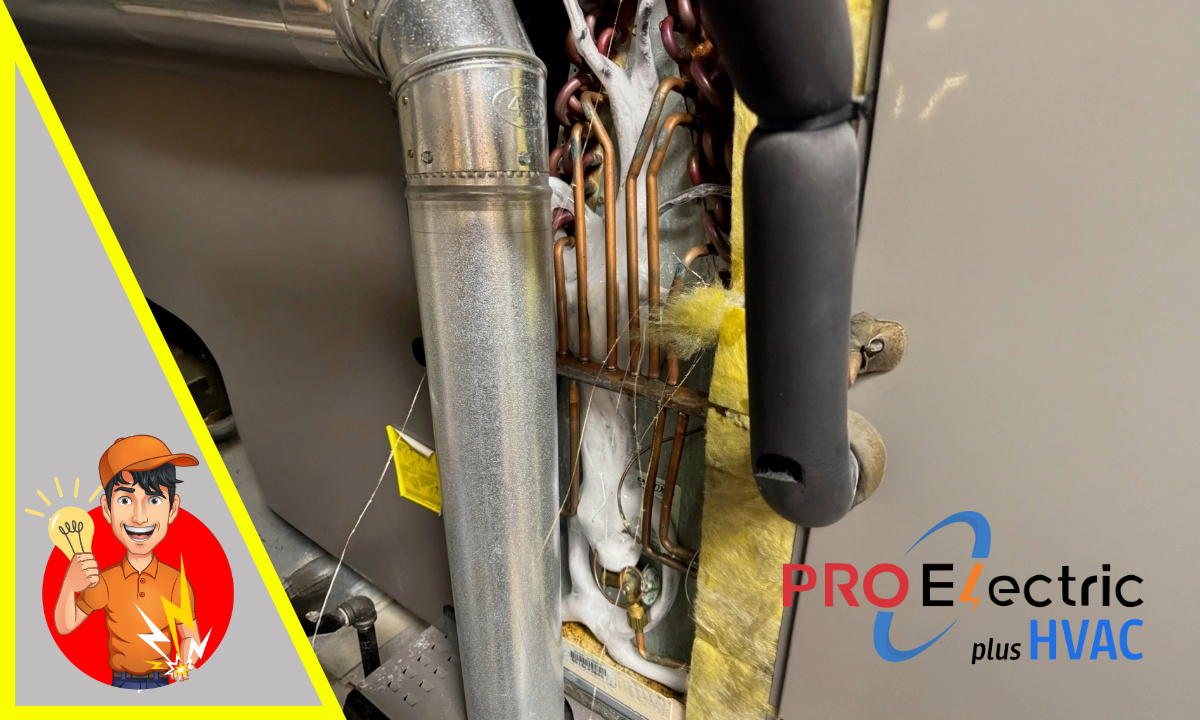FROZEN AIR CONDITIIONER Is Your AC Turning into an Icebox? The Real Reason Might Shock You — And It's Not Just Low Refrigerant
Here are 25 common—and often overlooked—reasons your air conditioner ices up, along with quick explanations so you can spot the culprit fast:
- Low Refrigerant Level
Too little refrigerant decreases pressure in the evaporator coil, causing it to drop below freezing. - Dirty Air Filter
A clogged filter chokes airflow, letting the coil get too cold and build ice. - Closed or Blocked Supply Vents
Shutting registers or furniture over vents reduces air movement, triggering a freeze‑up. - Slow or Failing Blower Motor
Without a strong fan, warm room air can’t keep the coil above 32 °F. - Thermostat Set Too Low
Running the AC nonstop at very low settings doesn’t give the coil a chance to thaw. - Oversized Air Conditioner
An AC that’s too big short‑cycles; in short bursts it can’t evaporate all moisture, which then freezes. - Undersized Return Ductwork
If return ducts can’t pull in enough air, the coil temperature plummets below freezing. - Collapsed or Kinked Flex Duct
A pinched duct starves the system of airflow just like a dirty filter does. - Dirty Evaporator Coil
Dust acts like an insulator, keeping heat out and allowing ice to build up. - Outdoor Temperature Below 65 °F
Running central AC in cool weather can make refrigerant pressures drop too low. - Thermostat Sensor Misaligned
A sensor touching the evaporator coil can mis‑read temperature and over‑cool the system. - Faulty Expansion Valve (TXV)
If it meters too much refrigerant, liquid floods the coil and freezes. - Refrigerant Overcharge
Too much refrigerant also causes flooding and icing. - Fan Speed Set Too Low
Many systems have adjustable fan speeds; the wrong setting chills the coil excessively. - Drain Line Clog
Backed‑up condensate water can freeze on the coil or in the drip pan. - Dirty or Damaged Fan Blades
Bent or dirty blades move less air across the coil, letting ice form. - Weak Capacitor
A worn capacitor prevents the blower motor from reaching full speed. - Frost‑Prone Location of Air Handler
Units in unconditioned attics or crawl spaces can run colder than intended. - Poor Insulation on Suction Line
Missing or torn insulation lets the refrigerant line sweat and freeze. - Loose or Worn Fan Belt (Older Units)
Belt‑driven blowers slip, slowing airflow and cooling the coil too much. - Incorrect Thermostat Wiring
Miswired controls can run the compressor without the blower. - Stuck Contactor
A contactor that won’t release leaves the compressor running almost constantly. - Leaky Return Plenum
Pulling hot attic air straight into the return can skew system pressures and temperatures. - Obstructed Outdoor Unit
Leaves or debris around the condenser raise head pressure, disrupting the balance inside and encouraging icing. - Refrigerant Leak at the Evaporator
Even a pinhole leak lets refrigerant escape and oil coat the coil, combining low pressure with poor heat transfer—perfect icing conditions.
What to Do Next
If you notice frost or ice, turn the system off at the thermostat but leave the fan on to thaw the coil.
Replace the air filter, open all supply vents, and check that nothing blocks airflow.
If ice keeps returning, call our licensed HVAC pro—refrigerant issues, and electrical components aren’t DIY‑friendly.
Stay cool!
Frozen AC FAQs Answered by Peter, Lead HVAC Tech
Why does my indoor coil look like a block of ice?
Ice means the coil temperature slipped below 32 °F. Nine times out of ten it’s low airflow (dirty filter, blocked vents) or low refrigerant. Fix the airflow first; if the problem returns, it’s time for a pro leak check.
I just changed the filter and it’s still freezing—what now?
Make sure every supply and return vent is wide‑open. If airflow’s good and ice reappears, the culprit is probably a refrigerant leak or a bad metering device, both of which need a licensed tech.
Can I keep running the AC while it’s iced over?
Please don’t. You’ll only strain the compressor. Switch the thermostat to OFF and the fan to ON. Let the ice melt completely before restarting.
How long does thawing usually take?
In our humid Virginia summers, expect 2–4 hours with the blower running. Speed it up with a box fan blowing across the air handler door.
Is it safe to chip the ice off with a tool?
Nope. You risk puncturing the coil fins. Let warm airflow do the work.
Could my thermostat setting be the issue?
Absolutely. Anything below about 70 °F on a muggy day can push the system past its limits. Set 72–75 °F for cooling and use ceiling fans for extra comfort.
Does outdoor temperature matter?
Yes. Running cooling when it’s under 65 °F outside drops refrigerant pressure too low. If you need shoulder‑season cooling, ask us about a low‑ambient kit.
What’s a TXV and why would it freeze my system?
The TXV (thermal expansion valve) meters refrigerant into the coil. If it sticks open, liquid floods the coil and turns to ice. It’s a replace‑not‑repair part.
My blower sounds weak—could that cause icing?
Weak motor, dirty blades, loose belt, or a tired capacitor all reduce airflow. We can test amperage and replace the part the same day.
I close vents in unused rooms to save money—is that bad?
It sounds thrifty but it starves the system. Keep at least 80 % of registers open so pressure stays balanced.
What does “short‑cycling” mean?
An oversized unit cools too fast and shuts off, never moving enough air across the coil. That leftover moisture freezes. A load calculation can confirm sizing.
Can a clogged drain line make ice?
Yes—standing water in the pan splashes onto the coil and freezes. We clear lines with CO₂ or a wet vac and add an anti‑algae tablet.
Should the refrigerant lines outside be sweating?
Light condensation is normal. Frost or thick ice outside means low charge or a restriction—give us a shout.
What’s the quickest DIY check before I call you?
1) New filter. 2) All vents open. 3) Thermostat at 75 °F. 4) Fan on. Still icing? Call.
How often should I replace filters to prevent this?
Every 30 days for 1‑inch filters, 90 days for 4‑inch. Pets or renovations? Cut those numbers in half.
Does low refrigerant always mean a leak?
Pretty much. Refrigerant doesn’t get “used up.” We locate leaks with UV dye or electronic sniffers and fix them before re‑charging.
Can over‑charging refrigerant freeze the coil too?
It can. Too much liquid backs up into the evaporator and flash‑freezes. Always trust a tech with digital scales and gauges.
Is a frozen coil dangerous to my family?
It won’t harm you directly, but it can flood the drain pan, spill water, and promote mold. Catch it early to avoid indoor‑air issues.
What maintenance plan do you recommend?
Our Comfort Guard Plan: two tune‑ups a year, priority service, and parts discounts. A clean coil, calibrated charge, and clear drain virtually eliminate freeze‑ups.
If my AC keeps freezing up, is replacement better than repair?
After two major refrigerant repairs or if the unit’s 12+ years old, replacement is usually smarter. Today’s high‑SEER2 systems save up to 40 % on energy and come with 10‑year warranties. We offer free estimates across all four counties.



